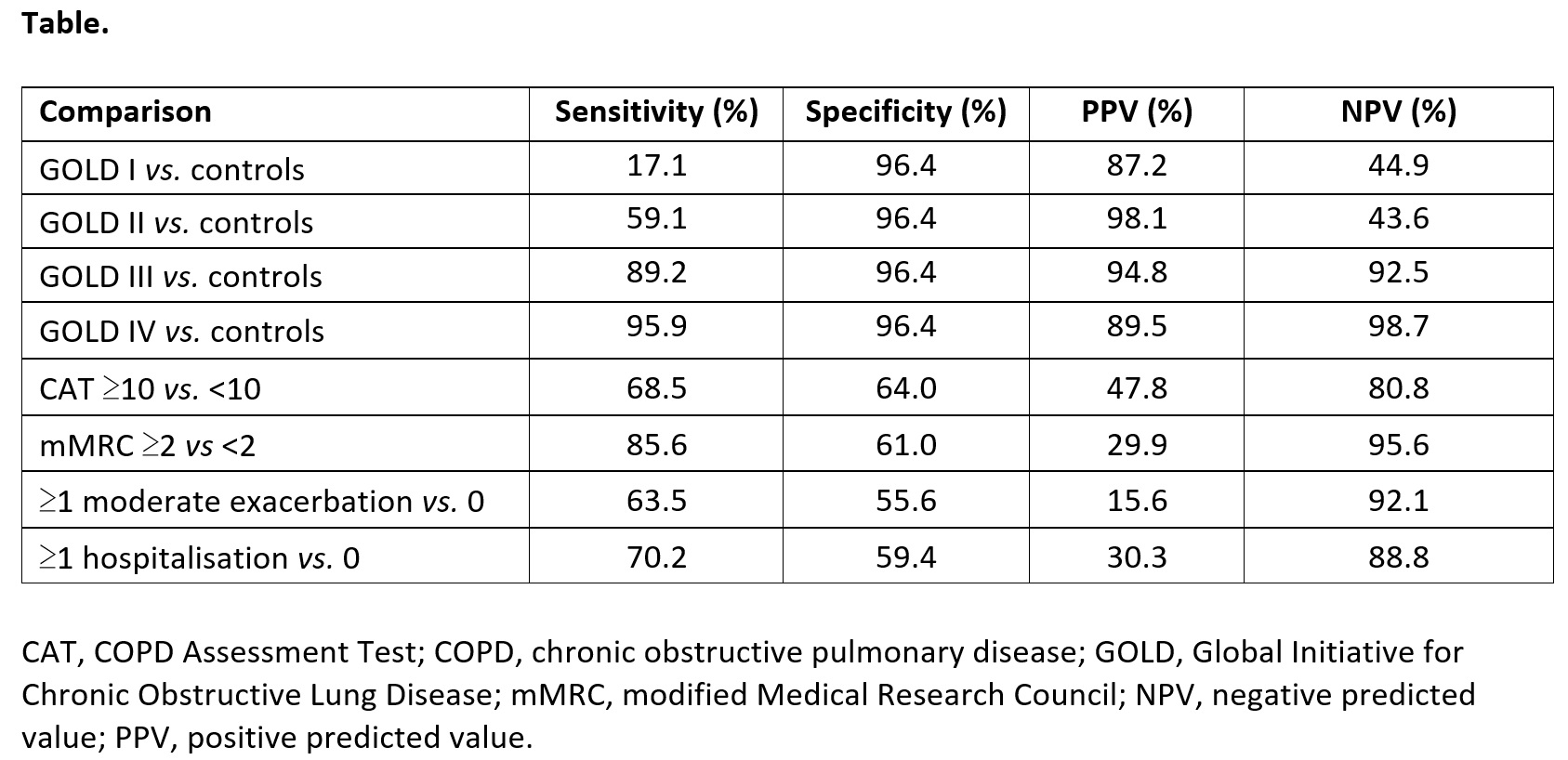Abstract
Background
CAPTURE was developed to identify individuals who may have COPD (Martinez et al. Am J Respir Crit Care Med. 2017;195:748). This study aimed to test its ability to identify patients with significant dyspnoea, impaired health status or at risk of exacerbations or hospitalisation.
Methods
Data are from COMPASS, a prospective study of COPD in China (Liang et al. ERJ Open Res. 2021;7:00201). Patients were categorised as CAPTURE positive if they met both criteria: questionnaire score ?2 and peak expiratory flow <250L/min (females) or <350L/min (males). Sensitivity and specificity were tested for GOLD I-IV, and patients with CAT ?10 vs <10, mMRC ?2 vs <2, or ?1 moderate exacerbation or hospitalisation in the previous year vs zero. Positive and negative predicted values (PPV and NPV) were calculated.
Results
COPD patients, n=1696, mean age 65.4±7.5 (SD) years, 91% males, post-bronchodilator FEV1 66.6±20.1 % pred were compared with 307 controls (chronic bronchitis and never smokers), mean age 60.3±7.0 years, 65% males, FEV1/FVC 0.77±0.04. Data are tabulated; the difference between upper and lower bounds for 95% CIs was <15% in each case.
Conclusion
CAPTURE has high sensitivity and specificity to detect COPD, but low sensitivity for GOLD I. Equally important for case finding, the high sensitivity and NPV estimates suggest that it may identify individuals who could benefit from treatment and those who may not.
Funding GSK (208630)
